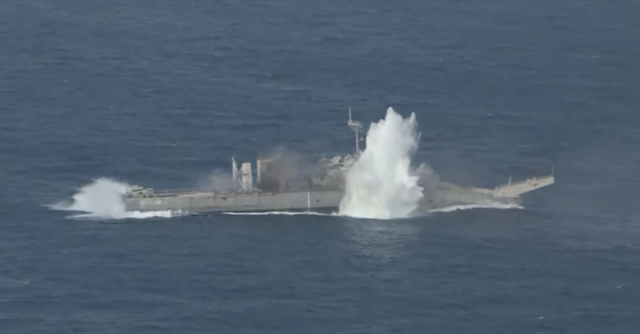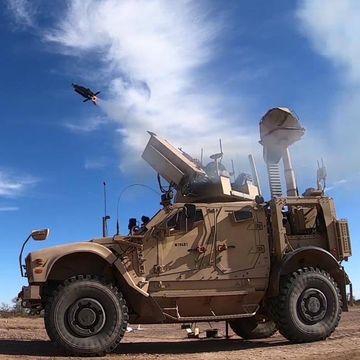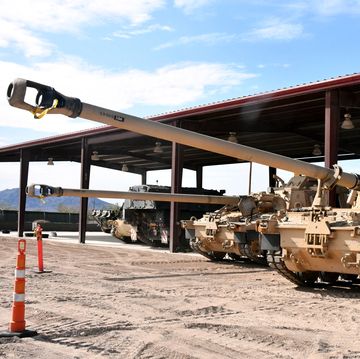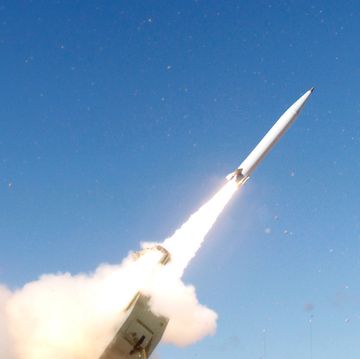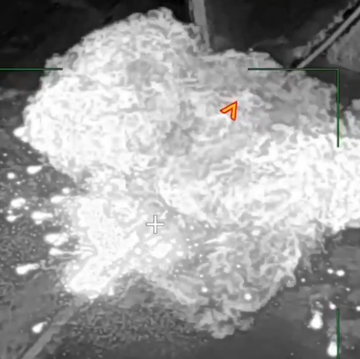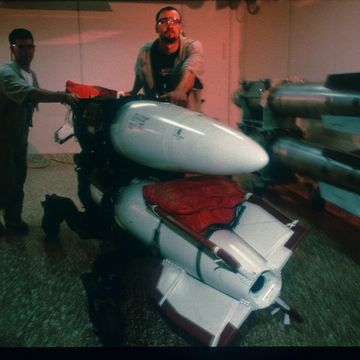The highlight of every RIMPAC exercise, held on even-numbered years off the coast of Hawaii, is the sinking exercise, or SINKEX. The U.S. Navy, allies, and other participants unleash live weapons on an old warship hulk, pummeling it relentlessly until it disappears under the waves. This year’s exercise gave the ex-USS Racine, an old Newport-class tank landing ship, the fiery sendoff after a barrage that included a guided US Army artillery rocket, Japanese anti-ship missiles, and finally a back-breaking submarine torpedo.
As this video produced by the US Indo-Pacific Command explains, the ex-Racine was towed out of Pearl Harbor by the tug USNS Sioux to a stretch of water off the coast of Kauai’s Pacific Missile Range Facility Barking Sands.
The SINKEX is about as environmentally friendly as sinking a warship can be. As the Navy explains, “Each SINKEX is required to sink the hulk in at least 1,000 fathoms (6,000 feet) of water and at least 50 nautical miles from land. Surveys are conducted to ensure that people and marine mammals are not in an area where they could be harmed during the event."
Racine, like all warships on the business end of a SINKEX, was rigorously scrubbed of hazardous materials, a process described as ridding the ship of “polychlorinated biphenyls (PCBs), transformers and large capacitors, all small capacitors to the greatest extent practical, trash, floatable materials, mercury or fluorocarbon-containing materials and readily detachable solid PCB items. Petroleum is also cleaned from tanks, piping and reservoirs.”
This year, the land, subsurface, and air-based forces took part in the SINKEX. The Royal Australian Air Force took a shot from the air, launching a Harpoon anti-ship missile from a P-8A Poseidon maritime patrol aircraft.
In another complex exercise a Japanese P-3C Orion aircraft was sent to locate the ex-Racine but experienced simulated jamming, so a U.S. Army Gray Eagle UAV and AH-64 Apache went out and found the target instead. The Army helicopter passed the data to U.S. and Japanese forces. A U.S. Army team launched a Norwegian-made Naval Strike Missile while the Japanese launched four Type 12 land-based anti-ship missiles. All five missiles hit their targets.
Another part of the test is a bit of a mystery. According to the Honolulu Star-Advertiser, the U.S. Army fired five precision-guided Guided Multiple Launch Rocket System (GMLRS) rockets at the target. Ordinarily, GMLR has a range of about 43 miles, but according to SINKEX regulations the target must be at least 57 miles offshore. The Star-Advertiser also notes that the Naval Strike Missile was fired at a range of 63 miles—and Barking Sands is not a big base. So how did GMLRS reach the target?
The GMLRS launch vehicle, a HIMARS rocket artillery truck, could have been parked on the flight deck of a US Navy ship—the Marines did it in 2017. This was celebrated as a great act of cooperation between the services. This time there was no celebration, and U.S. Navy’s Twitter feed confirms that no surface ships took part in the exercise, only aircraft, submarines, and land-based assets. The Department of Defense’s DVIDS media distribution service also confirms the GMLRS rocket was on land, at Barking Sands, when the launch took place. Here’s a photo of the HIMARS vehicle on the base:
One possible answer? The Army was using a new rocket. The Army is currently testing a new, longer-range version of the GMLRS rocket, Tail-Controlled GMLRS. TC-GMLRS ranges out to 90 miles, placing the Racine easily within reach. Implied in the test is that this new version of the rocket can hit moving targets, perhaps cued by the same Gray Eagle drone.
As the SINKEX coup de grace, the U.S. Navy nuclear attack submarine USS Olympia unleashed a Harpoon missile and a Mk. 48 heavyweight torpedo. Its final mission complete, the ex-USS Racine finally sank an hour after being hit by the torpedo, in 15,000 feet of water.

Kyle Mizokami is a writer on defense and security issues and has been at Popular Mechanics since 2015. If it involves explosions or projectiles, he's generally in favor of it. Kyle’s articles have appeared at The Daily Beast, U.S. Naval Institute News, The Diplomat, Foreign Policy, Combat Aircraft Monthly, VICE News, and others. He lives in San Francisco.
